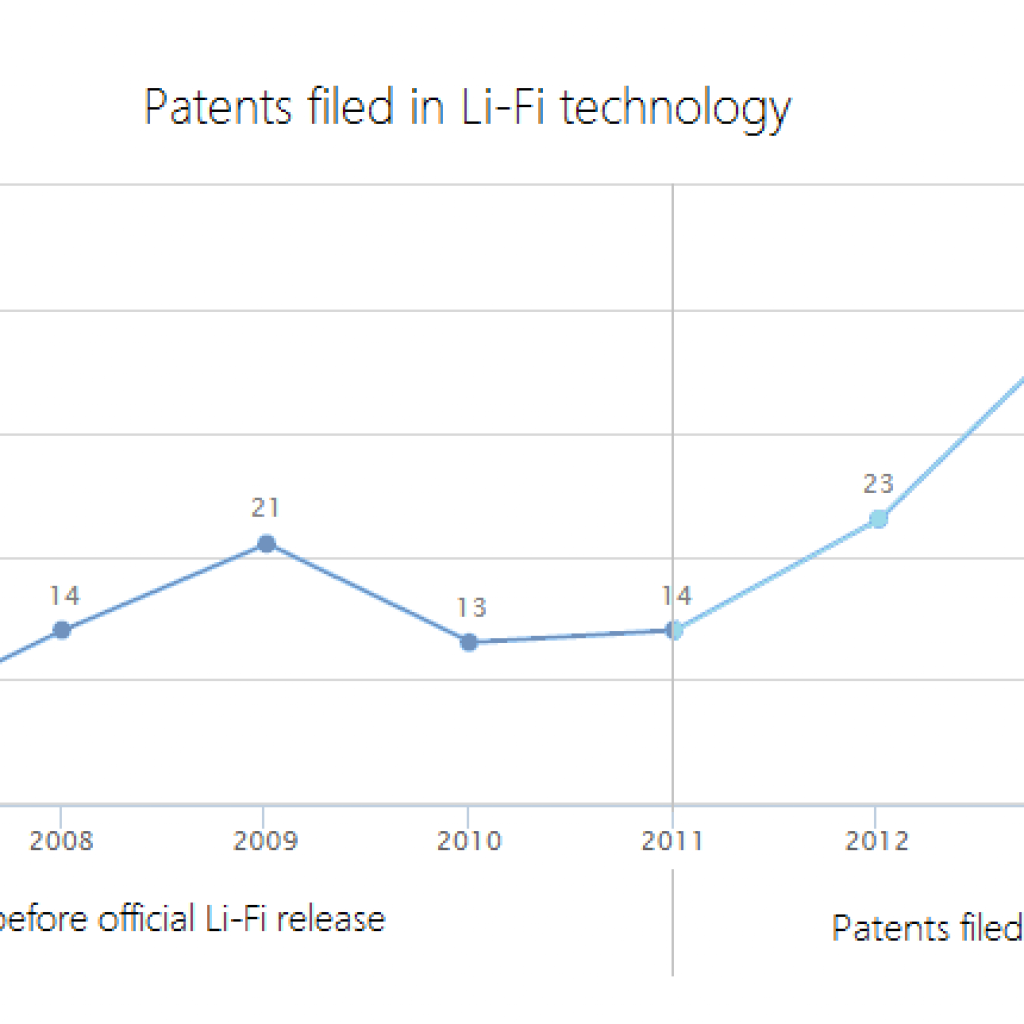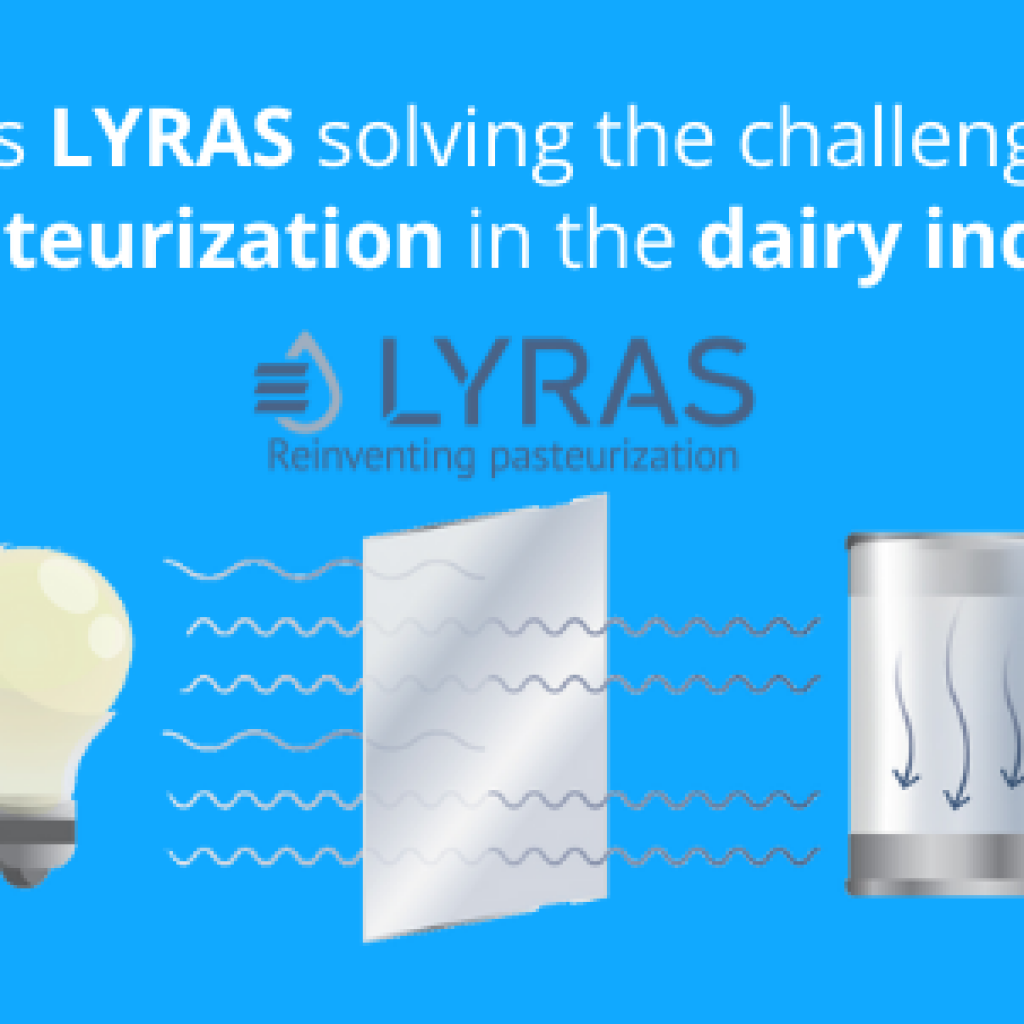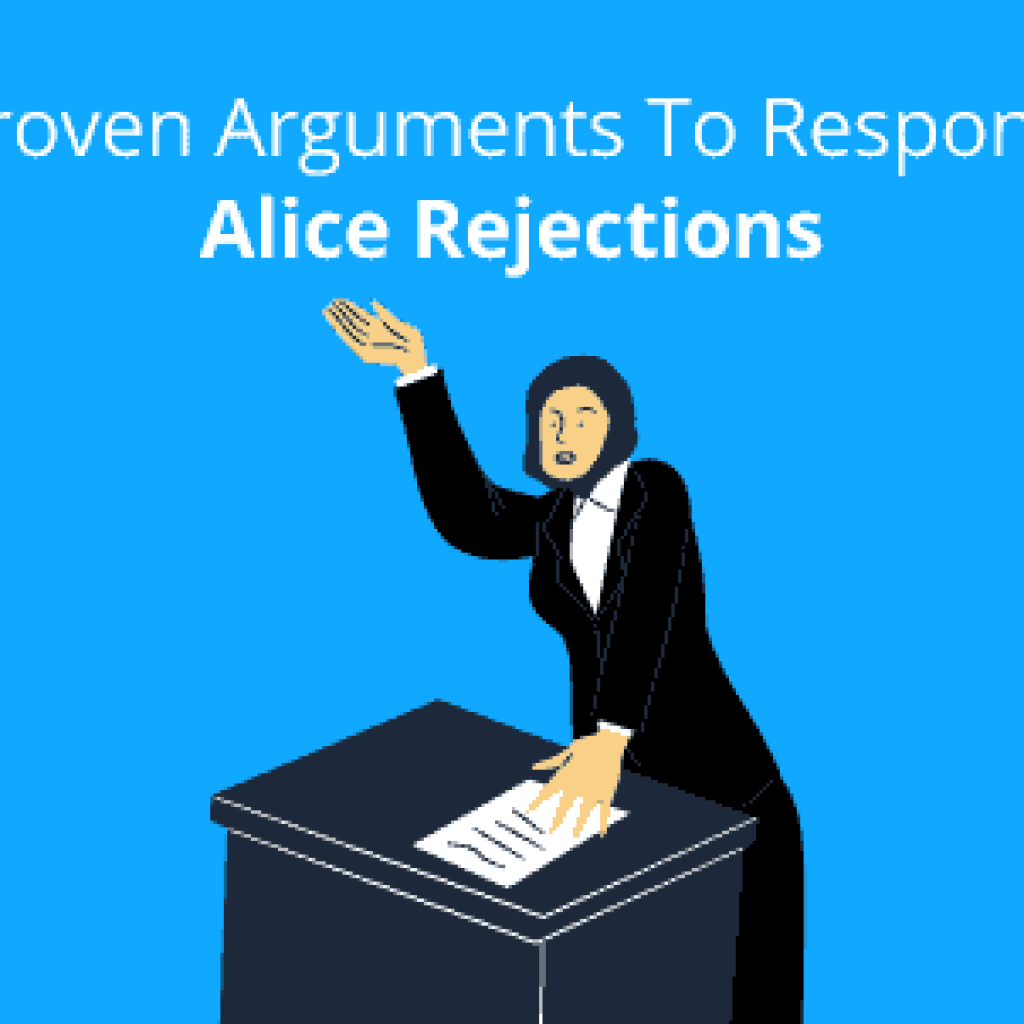“RoC has a rich history of skincare solutions innovation stemming from its French pharmacy roots. As the first brand to stabilize Retinol, which is one of the top U.S. dermatologist-recommended cosmetic ingredients for improving the appearance of aging skin, RoC continues to be one of the largest brands solely focused on anti-aging skin care products,”
– Matt Farron, principal at Gryphon.
In January of 2019, Gryphon Investors acquired RoC Skincare from Johnson & Johnson Consumer Inc. Matt’s vision, with this acquisition, was to expand RoC’s product offerings and establish it as a brand with complete skincare solutions.
Why RoC though? – You ask.
Well, RoC has more than 60 years of history in retinol, and that’s the answer!
Now, if skincare is your bread and butter, I would bet my life’s fortune that you have heard of retinol. It is undoubtedly one of the most touted skincare products for anti-aging, thanks to its unique set of abilities in lifting collagen production and increasing cell turnover. Its wonders against acne scars and hyperpigmentation are no secret.
Long story short, it’s the Swiss Army Knife of beauty. In just 3 to 6 months of regular retinoid use, improvements in wrinkles are apparent — and the best results take 6 to 12 months, tops.
For the uninitiated, all retinoids [the umbrella name for retinol and its derivatives like retinoic acid, retinyl palmitate, retinol aldehyde, and a host of others] originate from Vitamin A. Tretinoin (Retin-A, generic), tazarotene (Avage, Tazorac), and adapalene (Differin) are prescription retinoids; whereas adapalene is available over the counter (in a 0.1% formulation versus the 0.3% prescription version). Tretinoin is also sometimes used with alpha-hydroxy acids (AHAs) for additional skin-smoothing effects.
But whenever there is a popular kid in the block, haters tag along! Well, it is no different for Retinol either.
A lot many people complain retinol is pretty effing harsh — especially if the user has got sensitive or dry skin. Even the lowest concentration can result in flaking, drying, irritation, and redness. To add to it, retinol is phototoxic — meaning it makes the skin more sensitive to the sun. Thus, problems like hyperpigmentation and wrinkles can worsen in the summertime.
In other words, if you love to sunbathe, you should consider using a retinol alternative. Its rarer side effects include hives, swelling, and breathing difficulty. It’s also not safe for use during pregnancy or while breastfeeding as there’s a fear of causing birth defects.
The recent trend in natural products has added fuel to the fire. Even though no research says going ‘green’ is necessarily better for our skin, doctors claim that their patients are shying away from retinoids, since they’re chemically formulated.
Thus, brands have recently started researching alternatives to retinol. And, why won’t they? There is such a huge market to capture. And, they have either discovered or invented numerous skin-friendly retinol alternatives to consider, like epidermal growth factor (EGF), natural vitamin A-rich oils (such as rosehip oil and bakuchiol), and AHAs and BHAs, which are claimed to be just as effective.
Dermatologist Lily Talakoub of Mclean Skin & Dermatology Center notes –
“[Retinol alternatives] are better-tolerated, less irritating, can be used in the summer months, and [are] much easier to get because they are over-the-counter.”
The research trend also seems to ride this market hype, as shown in the charts below. Research around retinol for skin aging seems to have become stagnant over the years; whereas, on retinol alternatives for aging continue to increase over the years.
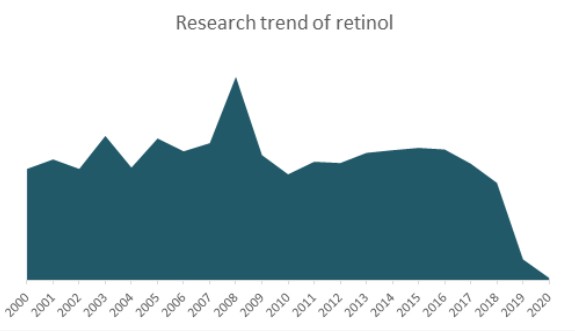
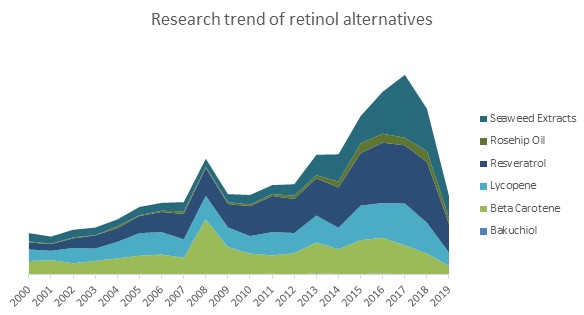
Where does the retinol alternative stand against the real thing?
Quite recently we were evaluating where all the retinol alternatives stand when benchmarked against the real thing.
We evaluated several retinol alternates like seaweed extracts, rosehip oil, bakuchiol, granactive retinoids, epidermal growth factors (EGFs), AHAs, BHAs, etc. For that, we extracted their compositions and use cases portraying their benefits and demerits from different patents and research publications. The data matrix was further fortified with the public reviews, awards received, and commercial products.
The idea was to put them against retinol on various pivotal parameters (e.g. clinical efficacy on new collagen formation, clinical safety data, side-effects for the skin, consumer acceptance, and tolerance in normal use), to judge whether they really can take the competition to retinol or not.
Any guesses what we found?
Well, Retinol is the Queen.
One thing became apparent very soon: most of these retinol alternatives are still no match for retinol in their current condition.
The thing that makes retinol a queen is that it increases collagen production, which is a very rare, very important aspect of anti-aging.
Why? Because, collagen is responsible for, well, everything: smoothing, firming, and strengthening your skin, so that it becomes more resilient to new and existing wrinkles. Most retinol alternative on the other hand, even though claim to be similar to retinol, only work to protect you from wrinkles, rather than treating the ones you already have.
But then, something interesting caught our eye. A patent (US20190091122A1) from Johnson and Johnson on the chemical composition –
(2E,4E,6E)-7-(1,1,2,2,3,3-hexamethyl-2,3-dihydro-1H-inden-5-yl)-3-methylocta-2,4,6-trienoic acid
+ 4-(1-(1,1,2,2,3,3-hexamethyl-2,3-dihydro-1H-inden-5-yl)vinyl)benzoic acid
If I portray it in a chemical structure, it looks something like –
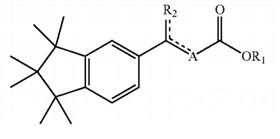
Yeah, tell me about it. The name, the structure, a complex chemical compound!
But what’s so special about it?
Everything you need to know about this retinol alternative
Well, here’s the part of the patent that got us hooked –
The present invention relates to compositions comprising one or more extracts and/or compounds having retinol-like activity and properties.
Intrigued?
Johnson & Johnson is no stranger to retinol. In fact, for the better part of the past decade, they owned RoC Skincare, a market-leading anti-aging skincare brand. The company’s 75+ products are sold in all 5 continents via different channels – online and offline.
In fact, in May 2017, their researchers reported a stabilized form of retinol stimulating the synthesis of hyaluronic acid in the skin and influencing the expression of genes, stimulating the synthesis of macromolecules — all of which show how deeply engrossed they are in retinol.
So, why this change of direction? Why research a retinol alternative? Is it just another add-on to the long line of retinol wannabes or is it some ground-breaking research? According to their patents, this technology seems to be the latter. On testing, the results show significant retinol-like properties and efficacy, with the seventh star, reduced irritation potential.
Specifically, one of the tests, as described in the patent, analyzed the compound’s effect on RARγ (retinoic acid receptor-γ) receptors. And positively, it showed dose-response in RARγ receptors in both agonist mode (AG) and positive allosteric modulator mode (PAM), just like retinol. The graphs below show the observed activity in the two modes respectively.
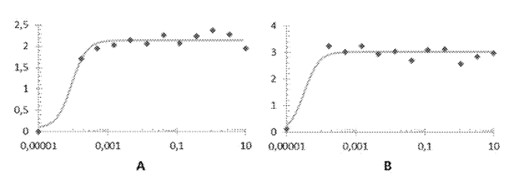
Here, the vertical axes are labeled in the ratio: (emission at 460 nm—background)/(emission at 530 nm—background), while the horizontal axis is logarithmically labeled in μM.
In Graph A, each lozenge displayed indicates an experimental result, the corresponding curve is traced and the average EC50 is calculated: 8.31*10−5±1.15*10−5. Further, in Graph B, each lozenge displayed indicates an experimental result, the corresponding curve is traced and the average EC50 is calculated: 3.01*10−5±3.27*10−6.
Further, another test, as described in the patent, was run to analyze the induction of CRABP2 and HB-EGF gene expression by the compound. In the test, human skin explants were topically treated with the compounds used at doses of 10 μM and 100 μM. In the results, the compound positively showed induction of CRABP2 and HB-EGF gene expression; thus eliciting retinol-like bioactivity.
These results are depicted in the following figures 2 and 3:
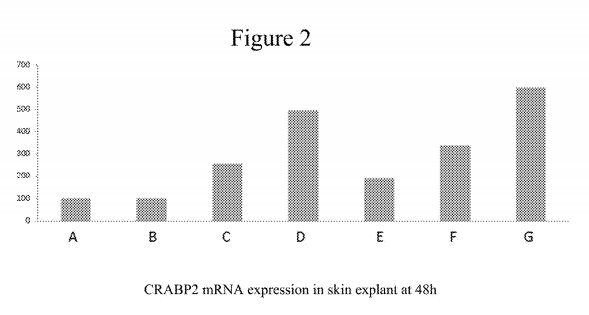
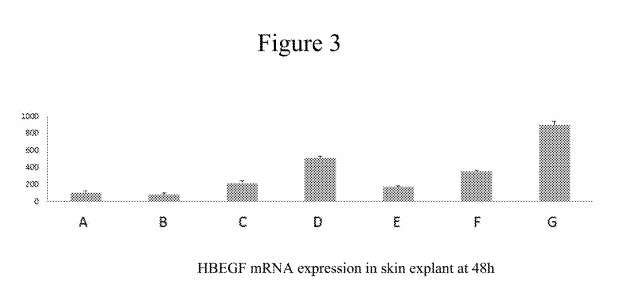
While in Figure 2, the CRABP2 mRNA expression is shown in skin explant at 48 h, in Figure 3, the HB-EGF gene expression is shown for the same.
Here, the vertical axes are labeled in concentrations for the expressions. Further, Bar A represents the result of an untreated control sample; Bar B represents the result of a vehicle sample (PG70/EtOH30); Bar C represents the result of a sample with the compound at 10−5M in a vehicle [here, the result is significant for CRABP2 mRNA expression, versus untreated control and versus vehicle]; Bar D represents the result of a sample with the compound at 10−4M in vehicle [here, the result is significant for both expressions, versus untreated control and versus vehicle]; Bars E and F correspond to results for a derivative of the compound (not discussed here for simplicity’s sake); Bar G represents the result of a sample of commercially available Neutrogena Rapid Wrinkle Repair, the active compound is retinol [here again, the result is significant for both expressions versus untreated control.]
The compound showcased retinol-like induction activity, albeit with less retinoid-like side effects, such as the release of the inflammatory mediator interleukin 8, as compared to the positive reference: Neutrogena Rapid Wrinkle Repair (0.1% retinol).
Conclusion
This new compound can be effectively used for skin aging and texture, minimizing fine lines and wrinkles, age spots, skin pigmentation and skin tone, dry skin, acne, psoriasis, and warts. All in all, the compound seems to be retinol minus its side effects.
So, what makes this patent so intriguing for us? Well, J&J first filed its technology as a provisional application in September 2017. It gave J&J about a year to consolidate its research on the material. In September 2018, they filed for a patent with the US patent office. And, in 4 months, by January 2019, a news piece floated:
“J&J’s RoC Skincare brand has been acquired by Gryphon Investors.”
Now, was this a coincidence? I don’t know. But does it mean something? I think so.
Maybe, and this is definitely a ‘maybe’, J&J has placed their bet on a retinol-free horse, and they are so confident about it that they are willing to go all the way.
Although there can be a lot of reasons behind selling a profitable unit like RoC Skincare, and, I will not pretend to know all of them. However, staying on the sidelines, I am getting goosebumps to even think that maybe this one patent revealed a whole different perspective on this sale, which we would otherwise be unaware of.
History, as well as our chart on research trends of retinol alternative, suggests that a lot of companies have tried to bring out products based on retinol alternatives, but have failed to replace them in the market.
Sytheon, for example, began the commercial use of the revered bakuchiol under the trade name Sytenol® in 2007. This compound already has a long history in Chinese and Indian Ayurvedic medicine and is considered the closest match to retinol, minus the irritation. And it doesn’t stop there. Next in line is Algenist, which discovered Alguronic Acid, a powerful compound responsible for regenerating the microalgae cell, back in 2011. According to some, it is an underrated alternative to retinol. Further, in 2012, Exsymol, a Monaco-based anti-aging products maker, approached a Saint John biologist to grow rafts of seaweed for a laboratory to then use them in their creams and moisturizers. But in a nutshell, none of them have been able to cut through the fence and take over the retinol highway.
Do you think J&J will be able to do so? Only time will tell.
Want a more detailed analysis of this sale? Or the so-called retinol alternative that J&J has found?
Authored by: Priya Vashishth and Arindam Som, Landscape, Oorja Pandya, Market Research






